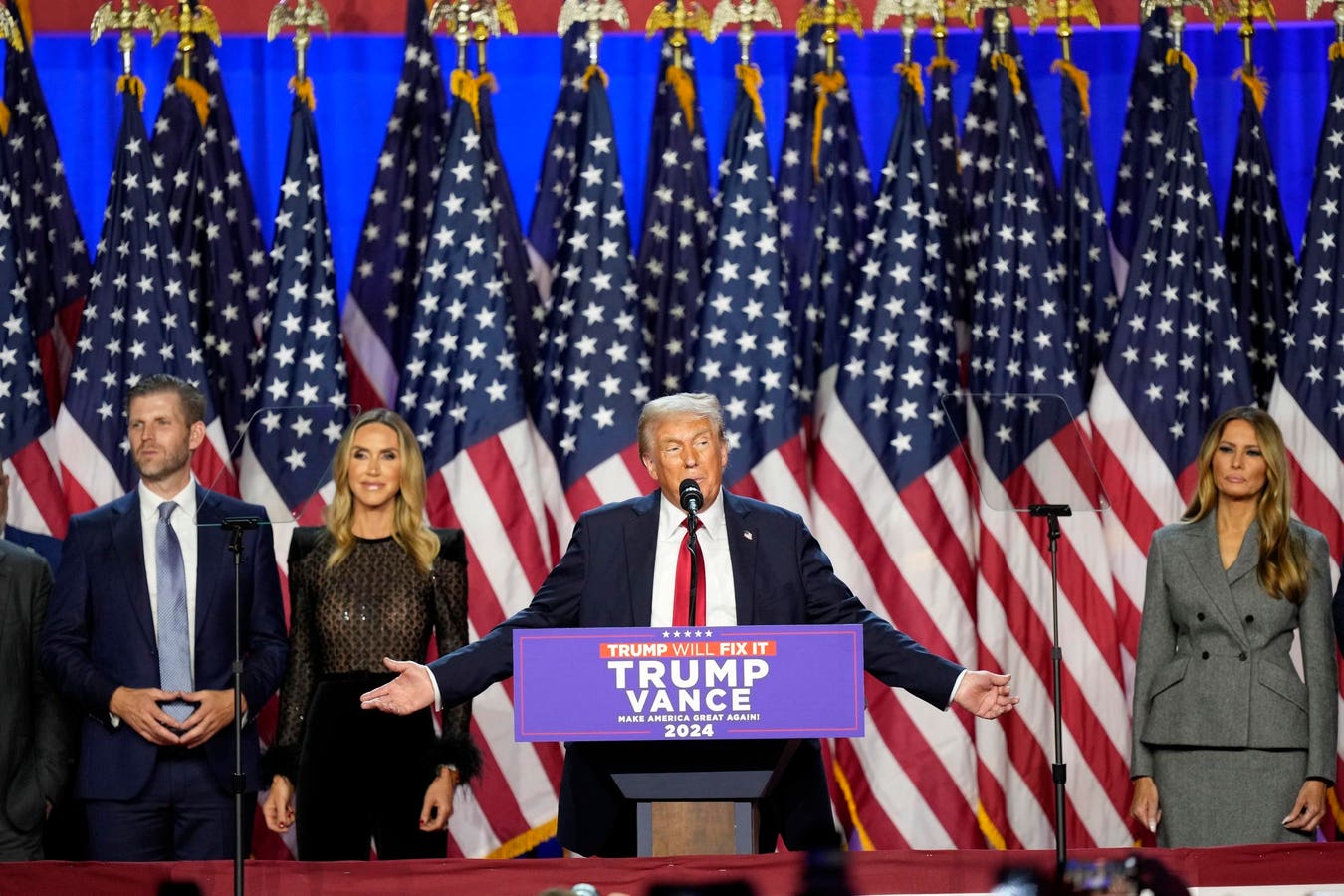Donald Trump an election night party. (AP Photo/Alex Brandon)
Many business leaders should start thinking about how the new Trump administration will affect their business. This article is not about who you should have voted for, but what topics should be on the business leader’s radar screen.
Candidates of both parties make many promises that they do not keep. Sometimes they forget their promises, sometimes they can’t get Congress to follow through, and sometimes they take actions that don’t get the desired results. So take all campaign talk with skepticism. President Trump, in particular, throws out ideas before any detailed analysis or implementation plan is developed. His campaign statements should not be taken literally, although we can glean a fair amount from his constant themes.
fees
Businesses that buy foreign-made products or sell goods to foreign buyers should watch for tariff changes. Many tariffs can be changed by the president without congressional approval.
of The United States regularly lowered tariffs after World War II — until Donald Trump’s first term in office. His tariffs were on target – most imports were not affected. But steel and aluminum from China were hit hard, along with a range of other products. Other countries retaliated with tariffs on US sales to those foreigners. After President Trump left office, the Biden administration kept most of Trump’s tariffs in place.
Manufacturing companies use global supply chains. For example, where a car is assembled doesn’t tell you anything about where the transmission or airbags are made. The country that sends the most cars to the US is … Mexico. But many cars are assembled in Mexico with parts from the US and other countries. So it’s complicated.
Although Trump has talked about massive tariffs, he won’t impose huge tariffs and then turn his attention elsewhere. He is a negotiator, a deal-maker. He believes this is his strength. So expect his strategy to be on target, but bigger than eight years ago. Then he will negotiate a deal and cut some slack. But until the end of his term, the rates will be higher. The effect is that buyers of manufactured goods and agricultural products will pay more and the increased cost will be passed on to customers. The increase in tariffs will not kill the economy, but it will certainly be a negative factor.
Immigration and work
Businesses that employ low-skilled workers should monitor changes in immigration policy.
Before the Trump presidency, net immigration averaged about one million people. Under Trump, immigration fell. Then the Biden administration liberalized the rules for refugees seeking asylum. Net immigration increased significantly in the Biden administration. In round numbers, net foreign immigration went from one million a year to three million a year.
The national employment gains of recent years were made possible by this immigration. Some immigrants received work permits, others worked without permits. The economic impact was obvious. Employers found workers and new workers spent money.
With fewer immigrants, businesses will find it harder to hire people for low-skilled jobs. This will limit economic growth, but will not reduce activity. Companies thinking about using advanced technology in place of low-skilled workers should accelerate those plans.
Environment and Climate Regulations
The administration has a wide range of discretion in environmental and climate regulations. President Trump was not really a deregulator in his first administration, but he greatly slowed the growth of new regulations. The second Trump administration will probably slow down climate-related regulations and enable more energy production and transportation.
The range of possible changes is quite wide. Few new regulatory initiatives will begin, but withdrawing existing rules usually requires lengthy processes. Companies should not expect dramatic returns. Instead, they will find that their worst fears about the upcoming changes will not be realized.
taxes
President Trump is likely to keep in place the business tax cuts he implemented in 2017—it would take congressional action to end them. The personal income tax changes that Trump approved are due to be renewed next year, and that seems very likely.
In some of his campaign speeches, Trump talked about changes that seem highly unlikely to be implemented, such as exempting gratuities and Social Security from taxes. There was mention of reviving the unlimited deduction for state and local taxes (SALT), but in the past some Republicans favored the cap as a way to punish liberal high-tax states. It could push to make the expense of business equipment purchases permanent, which would give some stimulus to capital spending.
It’s too early for companies to make plans for tax law changes, but keeping an eye on the news makes sense.
Overall impact
The new president’s policies will probably slow economic growth by a small amount. Average long-term GDP growth is around two percent (inflation adjusted). The impact of immigration restrictions would reduce our capacity for growth by one or two tenths of a percentage point. Tariffs would raise prices, but through a one-time effect rather than causing ongoing inflation. Relaxing environmental and climate regulations would boost economic activity by a small amount. The net effect of the policies will hardly be visible to most businesses, overwhelmed by routine changes in the competitive environment. However, specific businesses will find challenges – and opportunities – in the coming changes.
